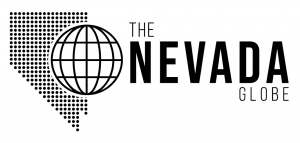
(Photo Credit: Sharon Sinclair, Flickr)
A Beginner’s Guide to Self-Funded Group Health Insurance
Transitioning to a self-funded group health insurance plan can offer significant cost savings, customization, and control benefits
By Aaron Bren, August 30, 2024 12:36 pm
Self-funded group health insurance is an arrangement in which an employer assumes the financial risk of providing health care benefits to its employees. Instead of paying a fixed premium to an insurance carrier, the employer pays out-of-pocket for each claim as it is incurred. This model can offer significant savings and greater control over the benefits provided, but it also comes with increased financial risk and responsibility.
Why Employers Choose Self-Funding
Employers may decide to transition to a self-funded plan for several reasons:
- Cost Savings: Self-funding can reduce costs by eliminating insurance carrier profit margins and gaining control over cash flow.
- Customization: Employers can design a plan tailored to their workforce’s specific needs, offering more attractive benefits to employees.
- Transparency: Employers have direct access to claims data, allowing for better management of healthcare costs and identifying cost-saving opportunities.
- Flexibility: Self-funded plans can be more flexible regarding plan design changes, benefit enhancements, and wellness programs.
Differences in Coverage and Administration
The following table provides a side-by-side comparison of fully insured and self-insured group health insurance plans across various aspects:

Transitioning from Fully-Insured to Self-Funded
The transition from a fully insured plan to a self-funded plan involves several key steps:
1. Assessment of Lives and Credibility:
The first step in transitioning to a self-funded plan is assessing the number of employees (lives) covered under the existing plan. Employers must determine if their group size is large enough to be considered credible. Credibility is crucial as it affects the predictability of claims and the ability to estimate costs accurately.
Typically, a group is considered 100% credible when it has enough members to produce stable and reliable claims data. This threshold can vary but is often set around 1,000 lives. Smaller groups may still self-fund but will need to add additional, comprehensive stop-loss insurance to mitigate the financial risk.
2. Determining the Premium Equivalent
Employers pay a fixed premium to the insurer in a fully insured plan. In a self-funded plan, the employer must calculate the premium equivalent, which is an estimate of the total cost of claims. This involves analyzing historical claims data, projecting future costs, and adding administrative fees and stop-loss insurance premiums.
The premium equivalent is crucial as it helps employers estimate their financial commitment, set employee contribution rates, negotiate stop-loss insurance, and monitor the plan’s performance by comparing actual claims against projected costs.
4. Connecting with a Third-Party Administrator (TPA)
Once the premium equivalent is established, the employer partners with a TPA. The TPA handles administrative functions such as processing claims, managing the provider network, and compliance with regulations. The TPA also assists in setting up the plan, managing the transition, and ongoing plan administration. A TPA provides comprehensive support in managing the day-to-day operations of the self-funded plan, offering expertise in claims processing, regulatory compliance, and cost management.
5. Deciding How to Carve Out Services
“Carving out” refers to excluding certain services from the primary health plan and contracting them separately. This is commonly done with pharmacy benefits and specialty drugs. Employers need to decide which services to carve out, which can often lead to cost savings and better service management. Engaging with PBMs and specialty drug pharmacies during this stage is crucial. PBMs can provide customized pharmacy benefit management, helping to control drug costs and utilization. Specialty drug pharmacies can offer targeted management for high-cost medications, ensuring employees receive the appropriate therapy while controlling expenses.
Transitioning to a self-funded group health insurance plan can offer significant cost savings, customization, and control benefits. However, it also requires careful planning, a solid understanding of the financial risks, and a strong partnership with a TPA. Employers, producers, insurers, PBMs, and members all play crucial roles in successfully administrating and managing a self-funded plan, ensuring that it meets the needs of everyone involved.




